
1922 Photogravure Francisco Goya Art Marquesa Mariana De Pontejos Port Francisco goya
In 1799, Goya became Primer Pintor de Cámara (Prime Court Painter), the highest rank for a Spanish court painter. In the late 1790s, commissioned by Godoy, he completed his La maja desnuda, a remarkably daring nude for the time and clearly indebted to Diego Velázquez. In 1800-01 he painted Charles IV of Spain and His Family, also influenced.

The Marquesa de Pontejos, 1786 by Francisco Goya
El tipo de retrato con un paisaje idílico de fondo indica influencias francesas y británicas. Exposiciones Goya 1900 Ministerio de Instrucción Pública y Bellas Artes Madrid 1900 Mayo 1900. Responsables científicos principales Aureliano de Beruete, Alejandro Ferrant, Marqués de Pidal y Ricardo Velázquez.

Marquesa de pontejos Banque de photographies et d’images à haute résolution Alamy
In this oil on canvas painting, the Marquesa de Pontejos shows off a pink carnation at her fingertips. Brides often depicted this carnation as a love symbol. At age 24, she married Carlos III's radical prime minister, sibling of the Conde de la Floridablanca, in 1786. Her husband was the ambassador of Spain to Portugal at the time.
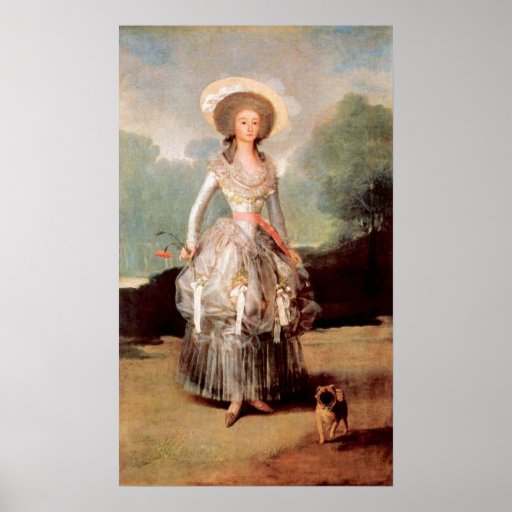
Portrait of Marquesa de Pontejos Sandoval by Goya Poster Zazzle
Bibliography Related Content Overview Trees, grass, and shrubbery, simplified almost to abstraction, set off the fragile, wasp-waisted figure of María Ana de Pontejos y Sandoval, the Marquesa de Pontejos.

The Marquesa de Pontejos 1000Museums
Inspired by African and Iberian art, he also contributed to the rise of Surrealism and Expressionism. Picasso's sizable oeuvre grew to include over 20,000 paintings, prints, drawings, sculptures,ceramics, theater sets, and costume designs. He painted his most famous work, Guernica (1937), in response to the Spanish Civil War; the totemic.

The Marquesa de Pontejos Francisco Goya Francisco goya, National gallery
Descripción. La marquesa de Pontejos, dama bella e ilustre, casada sucesivamente con tres personajes influyentes, deslumbraba de este modoa la aristocracia de Madrid. Aparece en un jardín, vestida con un elegante traje en tonos grises adornado en la sobrefalda con cintas blancas, flores rosas y una cinta en la cintura del mismo color.
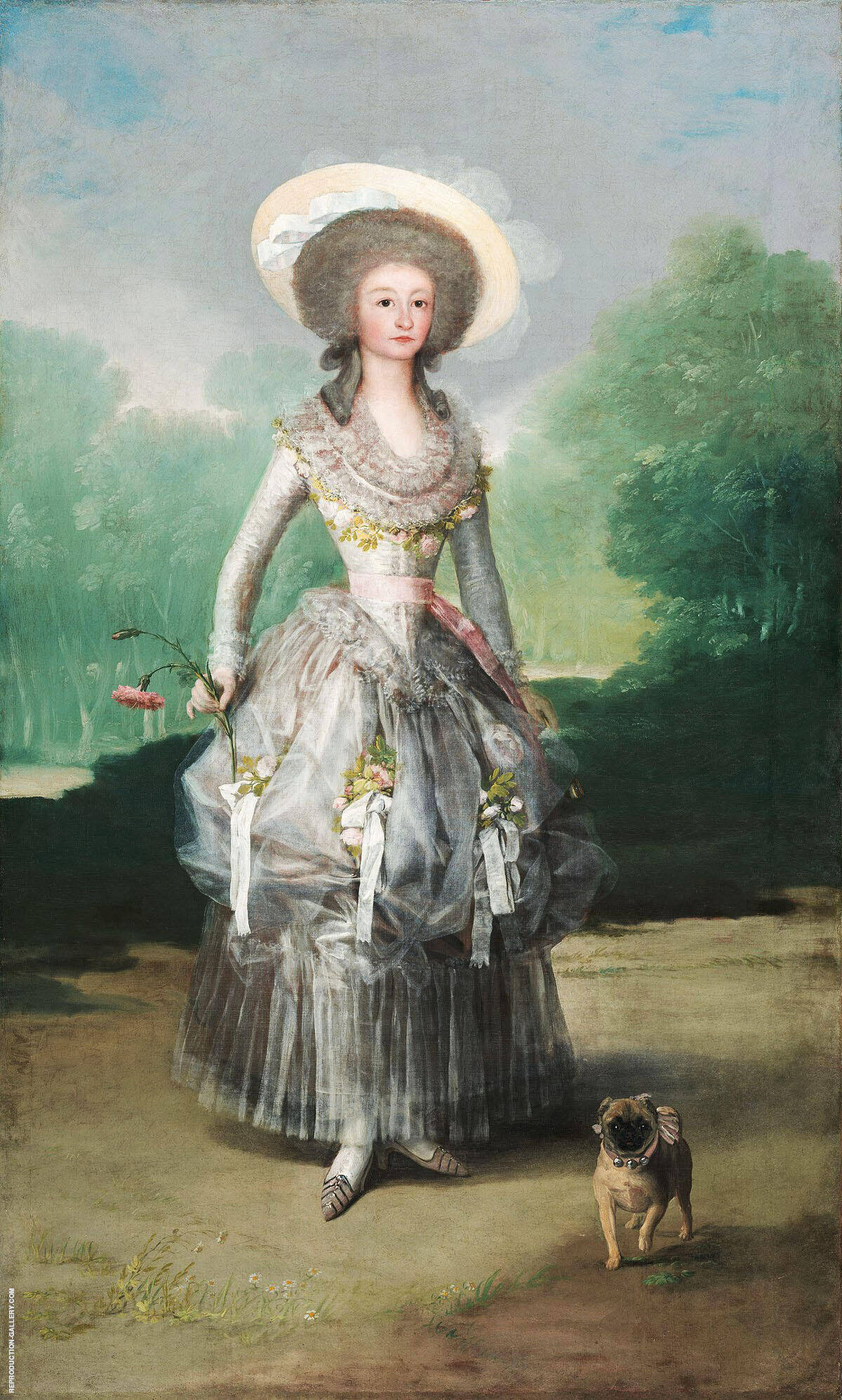
The Marquesa de Pontejos c1786 Oil Painting Reproduction
Le Portrait de la marquise de Pontejos est une huile sur toile peinte vers 1786 par Francisco de Goya. Le tableau représente une jeune noble espagnole vêtue en bergère, de dimensions naturelles, et accompagnée d'un petit chien. Contexte Goya était devenu en 1786 peintre de la cour Charles III d'Espagne puis pour Charles IV.
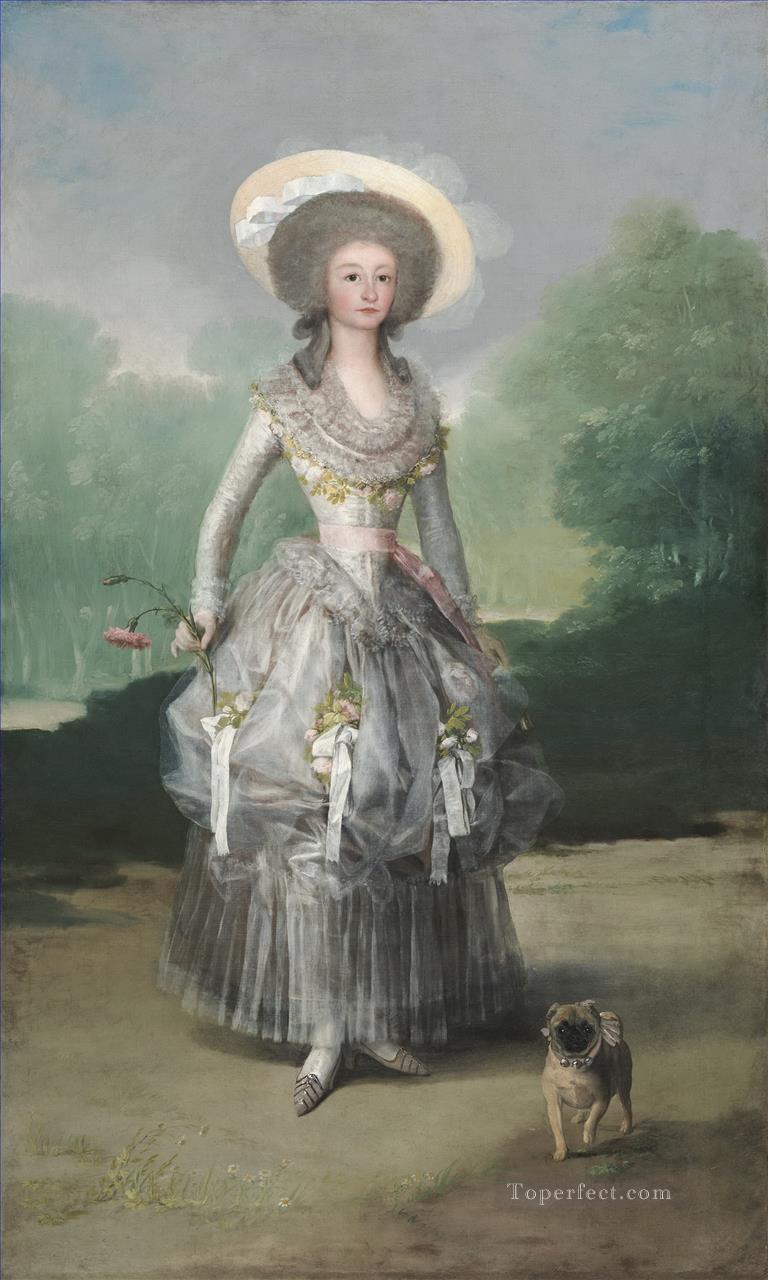
The Marquesa de Pontejos Francisco de Goya Painting in Oil for Sale
The Fight at the Venta Nueva • 1777 Portrait of Maria Teresa de Vall… • 1783 Summer, or The Harvest • 1786 The Straw Ma… • 1791-1792 Bad night • 1799 Charles IV of Spain and his family • 1800 Nude Maja • 1800 The Third of May 1808 (Execution of the Defenders of Madrid) • 1814 The Madhouse • 1812-1814 Saturn D… • 1819-1823 View all 406 artworks
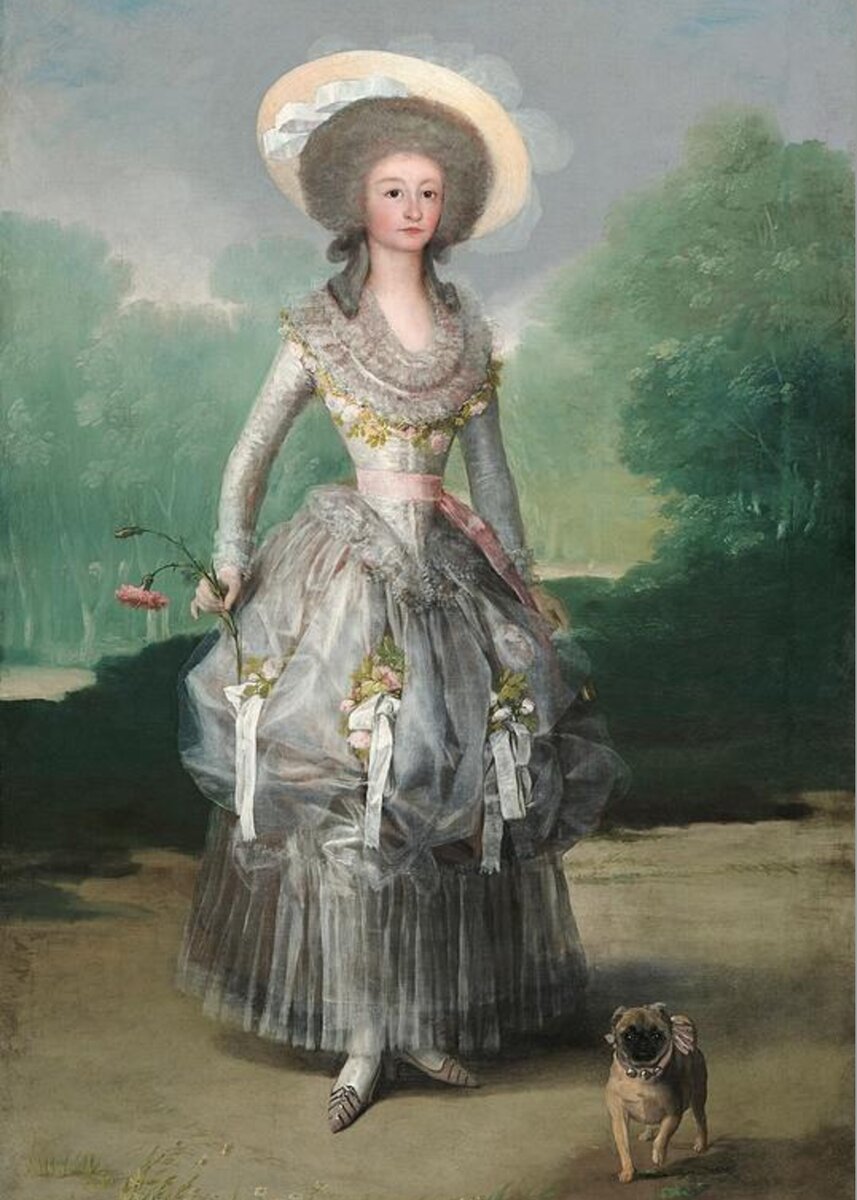
The Marquesa de Pontejos Greeting Card for Sale by Francisco Goya
Retrato de la marquesa de Santa Cruz / (1,30 x 2,10) / Firmado y fechado en 1805 / Cat. 7070 / Adquirido por el Estado con amplia colaboración social en abril 1986' Inscriptions + D a Joaquina Girón Marquesa de Santa Cruz / por Goya 1805 Signed and dated. Front, lower left corner.
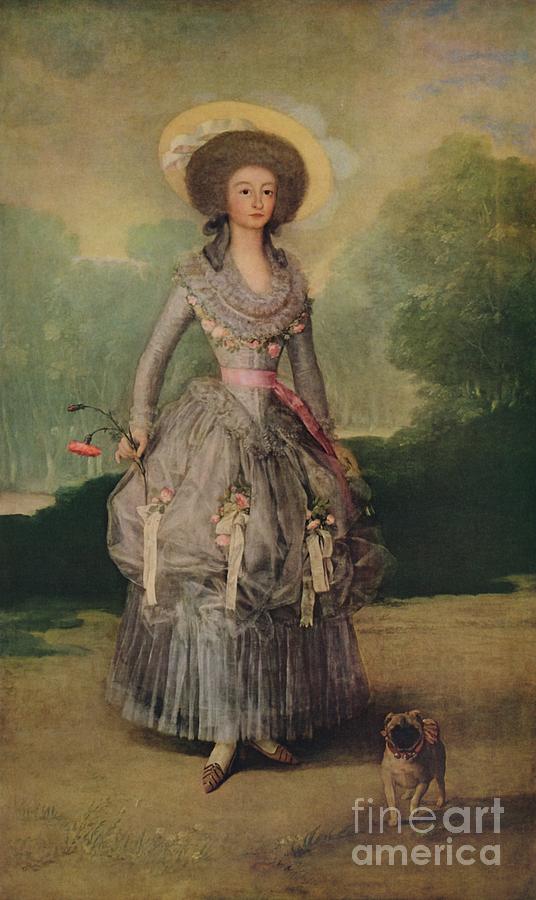
The Marquesa De Pontejos by Print Collector
Upon the death of her mother in 1801, she inherited the title Condesa de la Ventosa. In 1807, on her father's death, she became the fourth Marquesa de Pontejos. Doña Ana Marña married three times; firstly in 1786 to Francisco de Moñino y Redondo, Spanish ambassador to Portugal and brother of the Conde de la Floridablanca, First Minister to.

Die marquesa de pontejos Fotos und Bildmaterial in hoher Auflösung Alamy
From Wikimedia Commons, the free media repository Media in category "The Marquesa de Pontejos (Goya, National Gallery of Art)" The following 8 files are in this category, out of 8 total. Francisco de Goya - The Marquesa de Pontejos - 1937.1.85 - National Gallery of Art.jpg 1,231 × 2,048; 521 KB

Goya, The Marquesa de Pontejos National gallery of art, Francisco goya, Pug art
The Portrait of the Marchioness of Santa Cruz or Portrait of the Marquise of Santa Cruz is an 1805 portrait by the Spanish artist Francisco José de Goya y Lucientes, a family friend of the subject.It has been owned by the Museo del Prado since 1986, when it bought it from its previous owner for over US$6 million.. It shows Joaquina Téllez-Girón, Marquise of Santa Cruz clad in a very light.

a painting of a woman wearing a large hat
El Retrato de la marquesa de Pontejos es un óleo sobre tela pintado hacia 1786 por Francisco de Goya. La pintura muestra a la joven noble española con vestido cortesano "de pastora", a tamaño natural y al aire libre, acompañada de un perrito. Contexto Goya se convertiría ese mismo año de 1786 en pintor de cámara de Carlos III y luego de Carlos IV.
Francisco de Goya's Marquesa de Free Photo rawpixel
Correo electrónico: [email protected] / Teléfono: +44 7429 011000 La marquesa de Pontejos tenía un rasgo distintivamente único en ella. La figura delicada y entallada de María Ana de Pontejos y Sandoval, la marquesa de Pontejos, ha sido despojada de los árboles, herbáceos y maleza, casi reducida a la abstracción.

Washington Speaks A sight for all eyes the Marquesa at the National Gallery of Art
El Retrato de la marquesa de Pontejos es un óleo sobre tela pintado hacia 1786 por Francisco de Goya. La pintura muestra a la joven noble española con vestido cortesano "de pastora", a tamaño natural y al aire libre, acompañada de un perrito.

Buy Art Reproductions Marquesa de Pontejos 1786 Francisco goya, National gallery of art, Pug art
Le Portrait de la marquise de Pontejos est une huile sur toile peinte vers 1786, peint par Francisco de Goya. La peinture à l'huile montre une jeune noble espagnole vêtue en bergère, de dimensions naturelles, et accompagnée d'un petit chien Goya était devenu en 1786 peintre de la cour Charles III d'Espagne puis pour Charles IV.